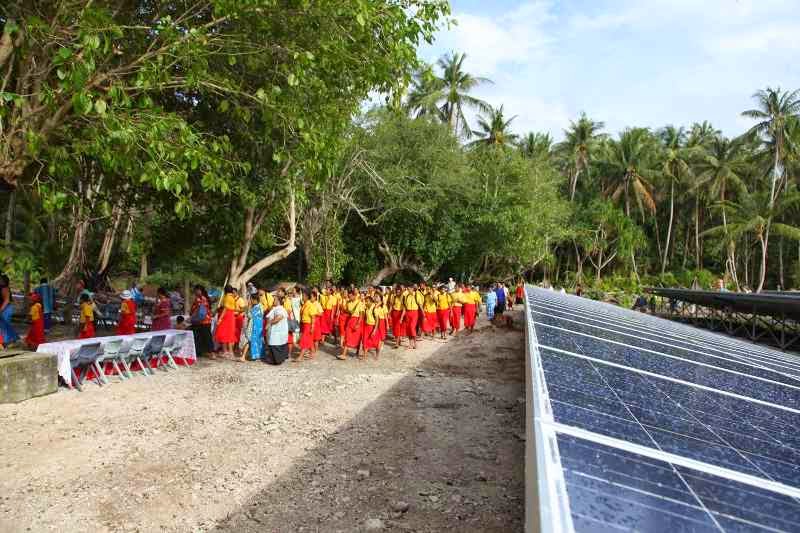Pacific islanders leading the way in the low carbon transition
Foua Toloa lives in Tokelau, a small group of three atolls
half way between Hawaii and New Zealand that like many island nations is on the
treacherous front lines of climate change. Foua helped Tokelau become the first
nation to switch to 100% renewable energy and he hopes this will inspire larger
countries to do the same. Combinations of drought and cyclones have made it
increasingly difficult for the islanders to access fresh water, forcing them to
import supplies for the first-time. On top of this, the rising sea level
threatens to engulf their homes, which are only 3 meters above the water. ‘Already
we are suffering extreme weather, storm surges, droughts, coral-bleaching, inundation
of land and groundwater salination,’ says Foua. ‘The islanders, who depend on fish,
can grow only a few crops on their 12 square kilometres of land.’ Other Pacific
islands have considered relocating their populations, but not Tokelau. ‘We have
no intention of leaving,’ Foua explains. ‘This is a God-given land; we have a
culture, a language, an identity and a heritage. We want to preserve Tokelau
for future generations.’ Instead, this nation of 1500 people has responded by
challenging to the world to join them in switching to 100% renewable energy.
The islanders know they cannot change the course of the climate crisis alone,
but they hope to inspire by example and remind humanity of the lives at stake
in the urgent need to for rapid climate action.
‘We stand to lose the most of any country in the world
due to climate change and the rising sea levels, so leading the way by making
the highest per person investment in the world is a message to the world to do
something,’ Foua says.
Tokelau worked diligently to replace its diesel based
energy system with solar power, which is backed up by local coconut oil. The
island chain has very few cars, so the bulk of their greenhouse gas emissions
came from the building sector. The New Zealand aid program paid $7.5 million
for solar panels and the Tokelauans did most of the work to install these and
upgrade their energy supply. The work was completed and the island went 100%
renewable in October 2012.
According to the equipment provider SMA, Tokelau is now
home to one of the largest standalone solar system in the world. The 1 MW solar
systems is made up of 4,032 photovoltaic panels, 298 inverters, 121 chargers and
1,344 batteries. The system currently supplies more energy than the Tokelau
residents need, to compensate for future development. While the system
installers have trained the islanders in order to ensure that they can maintain
the system themselves in the years to come. The solar power plant is
anticipated to save 12,000 tonnes of CO2 over its lifecycle. To put this in
context, it has been estimated that it will save around 1,600 times the annual
carbon emissions of the average person in the UK.
Despite all the achievements of the Tokelauans, they still
rely heavily upon the actions of rich governments and powerful companies around
the world for survival. Foua expresses his on-going concern for their safety, ‘my
heart is heavy. Climate change does not distinguish between colour or race. It
is an everyday reality here. It is our life.’
Source:
Renewables 100 Policy Institute's
Go 100% Project



Comments
Post a Comment